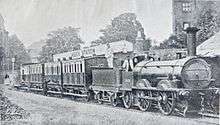Potteries, Shrewsbury and North Wales Railway
Potteries, Shrewsbury & North Wales Railway | |||||||||||||||||||||||||||||||||||||||||||||||||||||||||||||||||||||||||||||||||||||||||||||||||||||||||||||||||||||||||||||||||||||||||||||||||||||||||||||||||
|---|---|---|---|---|---|---|---|---|---|---|---|---|---|---|---|---|---|---|---|---|---|---|---|---|---|---|---|---|---|---|---|---|---|---|---|---|---|---|---|---|---|---|---|---|---|---|---|---|---|---|---|---|---|---|---|---|---|---|---|---|---|---|---|---|---|---|---|---|---|---|---|---|---|---|---|---|---|---|---|---|---|---|---|---|---|---|---|---|---|---|---|---|---|---|---|---|---|---|---|---|---|---|---|---|---|---|---|---|---|---|---|---|---|---|---|---|---|---|---|---|---|---|---|---|---|---|---|---|---|---|---|---|---|---|---|---|---|---|---|---|---|---|---|---|---|---|---|---|---|---|---|---|---|---|---|---|---|---|---|---|---|
| |||||||||||||||||||||||||||||||||||||||||||||||||||||||||||||||||||||||||||||||||||||||||||||||||||||||||||||||||||||||||||||||||||||||||||||||||||||||||||||||||
The Potteries, Shrewsbury & North Wales Railway, (locally known as the 'Potts'), was a project to build a line from the Potteries via Market Drayton, Shropshire, to quarries at Nantmawr and Criggion, Wales. It was initially opened in 1866, obtaining notoriety as the most expensive non-metropolitan railway then built, but was never constructed between Shrewsbury and the Potteries. The line rapidly became very run down as a result of low revenues and poor maintenance, and was closed for safety reasons in June 1880, becoming one of the few railways to close in Victorian times. Attempts to re-open the line were made in the late 1880s and the 1890s by the Shropshire Railways, which took over the property, but these failed. After years of lying derelict, it re-opened as the Shropshire & Montgomeryshire Light Railway in 1911.
History
Construction of the Potteries, Shrewsbury & North Wales Railway followed a flurry of parliamentary activity, with nine Acts of Parliament obtained between 1862 and 1866. The West Shropshire Mineral Railway obtained three Acts relating to a main line between Yockleton, on the Shrewsbury & Welshpool Railway, and Llanymynech, on the Oswestry & Newtown Railway, in 1862–4. That was subsumed into the Shrewsbury & North Wales Railway in 1864, the SNWR obtaining three Acts by 1866 and being realigned to connect with the Shrewsbury & Welshpool Railway at Hookagate in the process. In 1865, after several attempts to penetrate the Potteries towns, the Shrewsbury & Potteries Junction Railway obtained an Act to connect Shrewsbury with Market Drayton, linking the SNWR with the North Staffordshire Railway. The SNWR obtained another Act in 1866 before amalgamating with the SPJR to become the Potteries, Shrewsbury & North Wales Railway on the same day.
The main line was originally double track and was opened between Llanymynech and Potteries Junction, Shrewsbury, on 13 August 1866. The passenger station at Shrewsbury, intended to be temporary, was located near the Abbey and was accessed by a short and steep branch from near Coleham Junction. There was an extension beyond Llanymynech to Nantmawr, and a branch from Kinnerley to Criggion to serve stone quarries.
The railway company was always short of money. A receiver was appointed and the line closed on for the first time 21 December 1866, re-opening in December 1868. The main line was probably singled between Ford and Llanymynech in 1868–9, and between Shrewsbury and Ford in 1875. The branches to Criggion and Llanyblodwel, on the Nantmawr branch, were formally opened for passengers in 1871 and 1872.
Following a complaint to the Board of Trade concerning the condition of the Melverley river bridge, on the Criggion branch, the Board of Trade inspected the railway finding numerous track defects. The company had neither money nor will to carry out repairs and the line was abandoned in June 1880. Most of the stone traffic was continued after the Nantmawr branch was leased to the Cambrian Railways, the lease being made during June 1880. The Potteries, Shrewsbury & North Wales Railway (Winding Up) Act was obtained in 1881.
Nantmawr branch
After the suspension of service in June 1880, Cambrian Railways (CR) came to an agreement with R.S. France and the receiver on 28 January 1881, to maintain the stunted Nantmawr branch which accessed France's own quarries. The CR agreed to pay a royalty of 3d per ton, which was renewed, but the toll was reduced to 2d a ton in January 1886.[1]
On 11 April 1894, the CR agreed to build a 0.5-mile (0.80 km) deviation from its own Llanfyllin Branch to join the Nantmawr line at Wern. The Nantmawr branch reopened as a Cambrian subsidiary on 1 January 1896 and the deviation followed on 27 January. A lease for 99 years followed on 12 April 1900, with the CR paying £555 a year: half itself, half from the Tanat Valley Light Railway, which opened on 5 January 1904.[1]
Closed by British Railways in 1988 after the limestone quarry ceased production, the line was acquired by the Tanat Valley Light Railway Company during 2004. Part of the line re-opened as a heritage railway in 2009.[2][3]
Locomotives

Little is known about the locomotives. According to Woodcock[4] one of them, named Black Tom, was a 0-4-2 tender locomotive built by Bury, Curtis, and Kennedy in 1848 and acquired from the London and North Western Railway in 1866.
Shropshire & Montgomeryshire Light Railway
In 1888 an act of Parliament authorised the railway to be transferred to the Shropshire Railways Company and reconstruction was started. The company, however, was very litigious and fell out several times with its potential contractors and its financiers. Reconstruction work ceased in 1891, and in 1895 the scheme finally collapsed when a fund-raising prospectus failed to mention that the company was in receivership.
Starting in 1906 Colonel Holman Fred Stephens led a consortium which applied for a Light Railway Order, wishing to take over the railway, reconstruct it and to operate it as a light railway. Legal and financial difficulties slowed progress but an order was made in 1910 and the Shropshire & Montgomeryshire Light Railway was opened at Easter 1911.
References
- "Nantmawr branch". Cambrian Railways Society. 17 February 2007.
- "Tanat Valley Light Railway". Nant Mawr Visitor Centre. 13 August 2013. Retrieved 2 September 2013.
- "Nant Mawr Lime Kilns". Nant Mawr Visitor Centre. 13 August 2013. Retrieved 2 September 2013.
- Woodcock, George, Minor Railways of England and their Locomotives, Goose & Son, Norwich, 1970, page 151
Sources
- Turner, Keith & Susan (1982). The Shropshire & Montgomeryshire Light Railway. Newton Abbot: David & Charles. ISBN 0-7153-8233-0.
- Johnson, Peter (2008). The Shropshire & Montgomeryshire Light Railway. Hersham: Oxford Publishing Co. ISBN 978-0-86093-619-0.